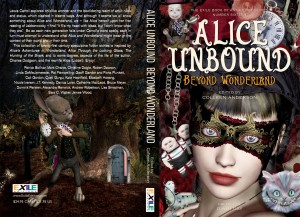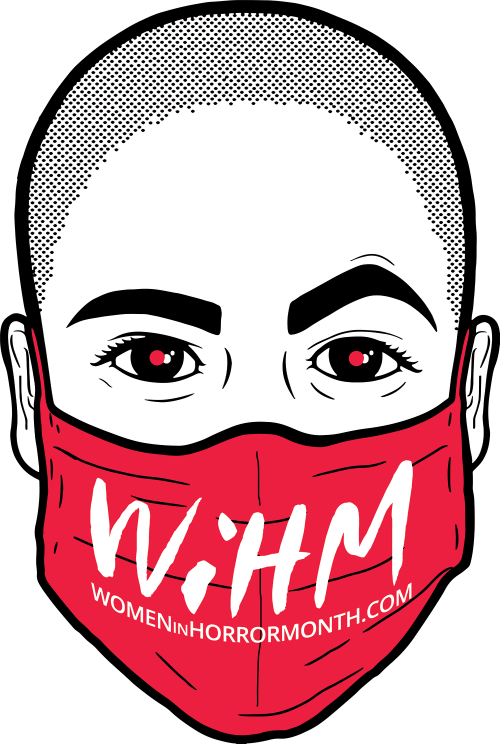
Today, from New York, I introduce LindaAnn LoSchiavo, writer and thinker. LindaAnn was nominated for the SFPA’s Elgin Award last year, for a collection of poetry. She has many works to her credit.
Handmaiden to the Dark Side
A bogeyman, like the one lying in wait under your bed, is likely to be unprepossessing. Beauty in folklore reflected inner worthiness, kindness, and morality. Conversely, fantasy’s evil-doers―goblins, trolls, demons, and miscreants―are born beastly: grotesque, misshapen, stunted, lacking sex appeal.
Tweaking that stereotype, Bram Stoker [1847-1912] decided to depict his iconic bad boy and animated corpse as a humanoid shapeshifter, erotically charged, his fangs coexisting with a sensual mouth. A charming cosmopolitan, Count Dracula is a tall, strong, mature aristocrat with the ability to regain youthfulness via blood-sucking. Stoker’s wealthy Transylvanian confirms his passion for real estate and ancient architecture, explaining, “A new home would kill me.” He’s courtly, too, holding the door open―for his guest’s untimely departure.
Dracula, the 1897 bestseller that’s been a model for supernatural horror writers, is one of the titles that thrilled me during my formative years. I read prodigiously as a child, one library book a day, memorizing poems and whatever caught my fancy.
Introduced to grand opera as a toddler, and taken to Broadway shows since I was four years old, I was not shielded from menacing adult themes onstage. For instance, since I had devoured Henry James’ gothic horror novella The Turn of the Screw as an elementary school pupil, I was taken to a performance of Benjamin Britten’s chamber opera adaptation. It featured two evil spirits who prey on the children; sexy, demonic Peter Quint and his cohort Miss Jessel, whose beautiful costumes and vocal chops dispelled some of their inherent Jamesian monstrosity.
Narrative and drama padded my girlish dreams. At nine, I had a poem accepted for publication and staged my first one-act drama in New York City (adapted from Alcott’s Little Women), my script typed six times for cast members. My nine-year-old self never heard of the sleight-of-hand trick of photocopying.
Whether writing or reading, what captivated me were the transgressive characters, who dared to be different, whether it was Jo March, Queen of the Night, Peter Quint, or Count Dracula. But whenever I put pen to paper, unlike Bram Stoker, I gave villainy a long leash. No intrusive vampire hunters in my stanzas.
My speculative poetry collection, Elgin Award nominee, A Route Obscure and Lonely [Wapshott Press, 2019, 62 pgs.] dances to dark music, featuring, for example, Black Sabbath rites, sinister deeds, and the Grim Reaper, who’s kept busy.
Two of my poems focus on vampires and what they vibe to: real estate and rejuvenation. “Unquiet House,” a dramatic monologue, is voiced by a vampire, posing as a house-hunter.
Unquiet House Dilapidated house. The broker’s keen To pitch the property to newlyweds From out-of-state, which we pretend to be. Maria’s chatter is distracting him, Eyes showing gleams of true engagement, winks. I slip out ― for a photo, I explain ― Meticulously cautious. Quiet shoes. How many bargain hunters have been here, Inspecting dirty cellar walls for clues Of water damage, not suspecting mold Is not the worst homeowner’s legacy? The deck is clouded. Spiders overhead, Suspended from dead vines, await a broom Knifing through filaments spun secretly. Unnatural deeds carry threads forward Like the black widow spider, breast-stroking Through gossamer voids under ragged moons. Sweet blood’s in undiscovered special rooms, Unconquerable sorrows tendon-taut. The “For Sale” sign nods back and forth as if It recognizes me through my disguise. No longer called a conjuror, my steps Still carry the pulsations of lost hearts. The agent doesn’t realize what’s right Behind him, why he must be sacrificed. Maria’s eyes meet mine, a message swept Across in spidery blinks of eyelash. The undead must have dreams for which to wait.
Published in Bewildering Stories, Issue # 827, October 7, 2019
You Tube Link: Unquiet House ― as a video-poem
Of the thirty-three poems in A Route Obscure and Lonely, twenty-six were written in 2019 for this collection and composed with some symmetry. For instance, “The Mermaid’s Lament” was paired with “What Mother Failed to Mention about Dating a Mer-Man;” a chant royal “Persephone in January” was mated with a dramatic monologue on Persephone’s abduction “The Son-in-Law from Hell;” “Samhain” set on October 31 was offset by a spookier vision inspired by Mussorgy’s 1867 orchestral tone poem: “Night on Bald Mountain, St. John’s Eve, June 23.”
Then, ready for another round of vampire versifying, I retrofitted Dracula as a player in a Regency romance in the vein of Jane Austen. The first line of Pride and Prejudice―about “a truth universally acknowledged,” inspired the epigraph to “The Tale of the Vintner’s Daughter.” Her family’s vineyards depend on sun, whereas “he shuns daylight, potato-like.” Could Dracula’s real estate portfolio be date-bait?
The Tale of the Vintner’s Daughter “It is a truth universally acknowledged that a foreign bachelor, in possession of a drafty castle, must be in want of a wife.” She overheard her parents mentioning A vast estate, long vacant, just changed hands. Inheritance. Fortunate foreigner, Related distantly. A gentleman ― Aristocrat ― whose bloodline staked his claim, Will take possession soon of Mount Ardeal. Townsfolk with daughters gave approval, sight Unseen. A bachelor! Well-circumstanced! Considering an heiress gets respect At any age, she was insulted when Her father dared to call her “an old maid.” Inspecting manicured and chaste white hands, Aware there’s merit in matched wedding bands, Realities of warring unmet needs Upbraid the tight lips of virginity. Receptions will be held, bite-size buffets. This heir, unknown, is suddenly “a catch.” The vintner’s daughter can sense life’s about To change once she’s in a relationship. Enchanting friendships could lead to courtship. Her early childhood memories were filled With bone-dry men admitting they had come To slake their thirst, which is unquenchable, She learned, while watching mother pour and pour. Vacationing at vineyards tutored her. She watched the women kneeling to tie off Vines ― how their expertise was in the knots Not grapes ― enduring, bending, bowing low, And salving calloused hands at quitting time. Admiring the fruitfulness of their Harvest on horseback, they see an ornate Black carriage pass, its curtains tightly drawn. It must be him, the heir they’ve heard about. Born in Romania, this bachelor Inherited five castles, acreage. Unlike the grapes, their ripening athirst For sun, he shuns daylight, potato-like, Basks in his soft cocoon of native soil. Their fete won’t start till red horizon’s drained And autumn air’s electric with decay. Assuming his disguise, Count Dracula Arrives, polite, attired properly, Seductive, well turned-out considering He can’t see his reflection. Mirrors won’t Hold him. Avoiding long engagements, he’ll Tell ladies he prefers to sleep alone. Echolocation guides his strong black wings To candle-lit bed chambers. Milky white Breasts, pleasure’s playthings, don’t stir his manhood. Sharp fangs seek virginal smooth necks. Always His type, blood’s sustenance is what he craves, Imagining the process from the grave. He’s parched when entering the ballroom. Delaying satisfaction sweetens it. Unmarried females study him, inspect His gold ancestral jewelry engraved Impiously. Flirtatious words affect The vintner’s daughter, nodding glassy-eyed, Intoxicated. His gaze penetrates Until she’s under his hypnotic sway. The heiress has arranged to meet the Count In private. At eleven they will mount Their horses, undetected, take a ride. Discreet, she’ll hide in the orangerie, Alerting him to the romantic grove By a rose-petalled trail, a daring ruse. Excited to imagine his caress, The dark dissolving inhibitions, she’s Startled by flapping wings overhead. Peculiarly, her petals were consumed. Spotting a white handkerchief on a chair, She rests her rosebuds there ― a silent prayer.
Published in Bewildering Stories, Issue # 825, Sep. 16, 2019
Dark poetry is not a road to warm refuge. Death occurs often in these pages and never in service of a higher purpose. Yet contemplating the eternal quietus is bracing. For away from the abyss, all height’s revised.
N.B.: Some poems have a video version.
You Tube Link: The Son-in-law from Hell ― as a video-poem
You Tube Link: Poe and His Women ― as a video-poem

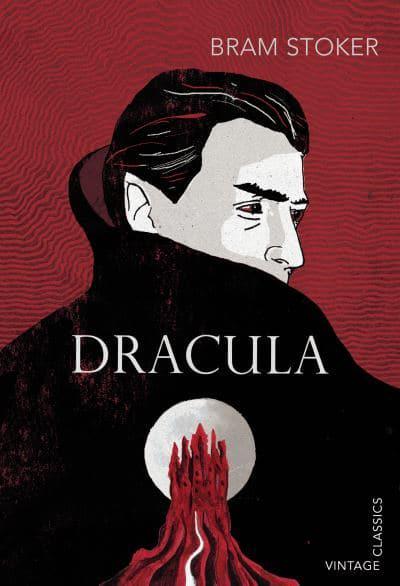

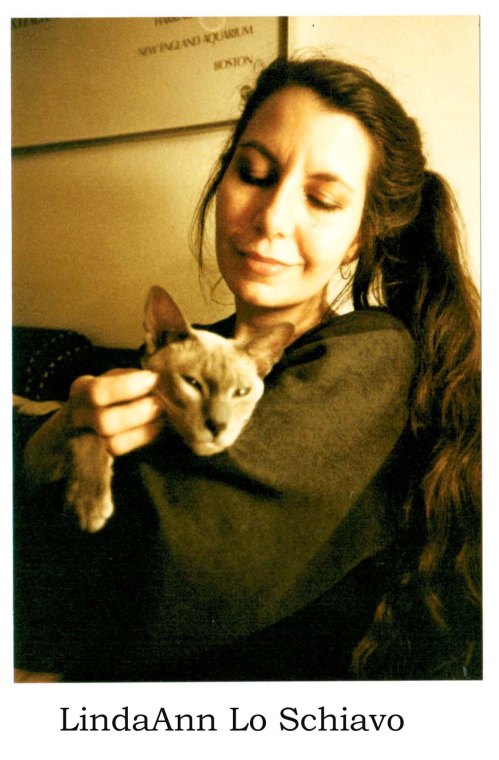
 Well, I don’t think there is much point in singing the pandemic song. This might be the only time in recent world history, or ever, where the world is experiencing the same event at the same time, and we’re all in the same boat. Isolation, depression, sadness, frustration, anger, fear: it’s affecting all of us in different ways. We don’t know if our world will ever go back to what it was and maybe all of it shouldn’t.
Well, I don’t think there is much point in singing the pandemic song. This might be the only time in recent world history, or ever, where the world is experiencing the same event at the same time, and we’re all in the same boat. Isolation, depression, sadness, frustration, anger, fear: it’s affecting all of us in different ways. We don’t know if our world will ever go back to what it was and maybe all of it shouldn’t.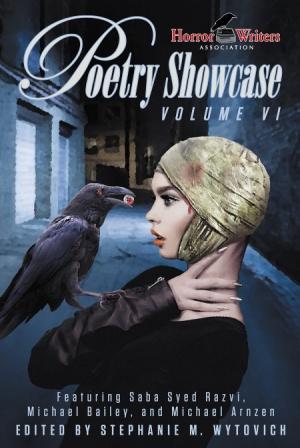 I’d add this into the post, also for my friend Vie. Besides Horror Tree, I also check out
I’d add this into the post, also for my friend Vie. Besides Horror Tree, I also check out  Onto other news. I was awarded a BC Arts Council Grant in March. Oddly it was for an application from last year but I’m not saying no to funds for my writing trips. Engen Books in eastern Canada sponsors the Kit Sora flash fiction–flash photography monthly contest. I’ve used the short 250 word entries as a way to continue writing while grieving my bother’s death last year. In Dec. I came third place with “
Onto other news. I was awarded a BC Arts Council Grant in March. Oddly it was for an application from last year but I’m not saying no to funds for my writing trips. Engen Books in eastern Canada sponsors the Kit Sora flash fiction–flash photography monthly contest. I’ve used the short 250 word entries as a way to continue writing while grieving my bother’s death last year. In Dec. I came third place with “
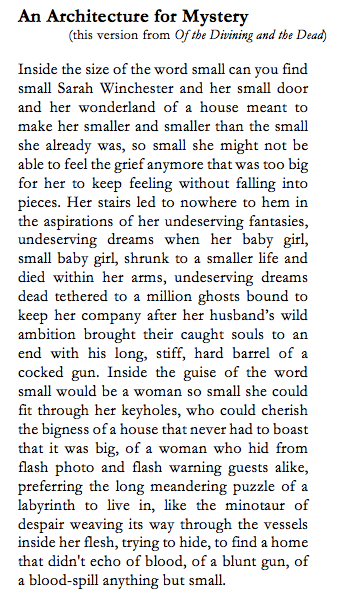
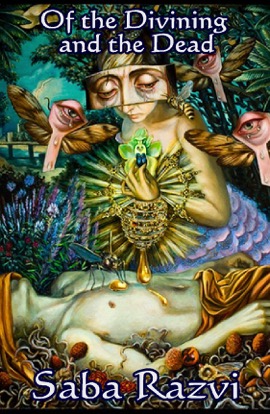 longing for the world. The most difficult aspect of writing poetry, then, isn’t finding the shape or the words or the idea, it’s the ability to let the world go long enough to invoke the energy that is the poem, to bring it into being. The ordinary world in which we all live is filled with obligations and tasks, responsibilities to be checked off and managed. We flit from one thing to the next, barely being in the world despite the time we spend. Poetry demands a deeper engagement, a vulnerability that comes from setting down those other duties and reins. I think the most difficult aspect of writing poetry is the point in the process when we must let go of our grasp on the ordinary world, trust our tether to allow us a space to create and a path to return. Composing poetry is a bit like falling into a trance; it isn’t something you can do while driving to the post office, but something you have to lean into. It needs deep time, and finding that time can be a challenge in our modern, busy lives!
longing for the world. The most difficult aspect of writing poetry, then, isn’t finding the shape or the words or the idea, it’s the ability to let the world go long enough to invoke the energy that is the poem, to bring it into being. The ordinary world in which we all live is filled with obligations and tasks, responsibilities to be checked off and managed. We flit from one thing to the next, barely being in the world despite the time we spend. Poetry demands a deeper engagement, a vulnerability that comes from setting down those other duties and reins. I think the most difficult aspect of writing poetry is the point in the process when we must let go of our grasp on the ordinary world, trust our tether to allow us a space to create and a path to return. Composing poetry is a bit like falling into a trance; it isn’t something you can do while driving to the post office, but something you have to lean into. It needs deep time, and finding that time can be a challenge in our modern, busy lives!

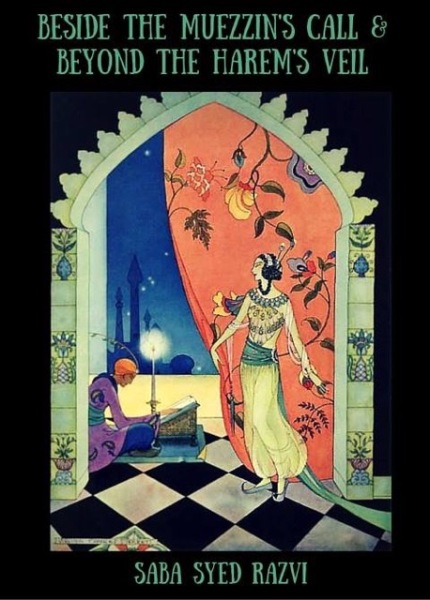 About my poetry: I like to test the limits of language, its textures and materiality, its logic and its magic. My poems are often fashioned into invented or embellished forms, sometimes inherited from gestures of divination or worship, from storytelling and from science. I tend to prefer things that are complicated, that slip between our expectations, and I write poems in such a manner that exaggerates such a sensibility in my form and my cadence. I’m not interested in making the familiar new, but in making the weird even weirder. My formal innovation and defiance of strictly traditional forms is a kind of linguistic play and ritual, all at once. As such, I tend to be drawn to and to explore literary works that blur the lines in all ways. A rebel on the page, if not in life! My academic research tends to explore more social and communal aspects of literature, technology, science, and the speculative. I’m drawn to the ways in which our literature reaches back into our human heritage, and what it projects forward with its words and with its technologies. After all, our language is all haunted and its words are the machines through which we experience those echoes of memory and the valence of the expression. I’m interested in work that blurs the lines and the distinctions, that deliberately transgresses the structures of literary art and human experience. It is my hope that my own work can inspire the same kind of interest in others as I feel for the things I write about and the things study.
About my poetry: I like to test the limits of language, its textures and materiality, its logic and its magic. My poems are often fashioned into invented or embellished forms, sometimes inherited from gestures of divination or worship, from storytelling and from science. I tend to prefer things that are complicated, that slip between our expectations, and I write poems in such a manner that exaggerates such a sensibility in my form and my cadence. I’m not interested in making the familiar new, but in making the weird even weirder. My formal innovation and defiance of strictly traditional forms is a kind of linguistic play and ritual, all at once. As such, I tend to be drawn to and to explore literary works that blur the lines in all ways. A rebel on the page, if not in life! My academic research tends to explore more social and communal aspects of literature, technology, science, and the speculative. I’m drawn to the ways in which our literature reaches back into our human heritage, and what it projects forward with its words and with its technologies. After all, our language is all haunted and its words are the machines through which we experience those echoes of memory and the valence of the expression. I’m interested in work that blurs the lines and the distinctions, that deliberately transgresses the structures of literary art and human experience. It is my hope that my own work can inspire the same kind of interest in others as I feel for the things I write about and the things study.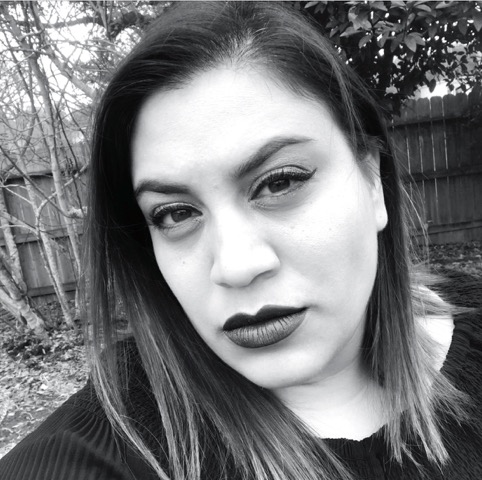 Crocodile Gardens (Agape Editions) and the collection heliophobia (Finishing Line Press), which appeared on the Preliminary Ballot for the Bram Stoker Award ® for Superior Achievement in Poetry, as well as the chapbooks Limerence & Lux (Chax Press), Of the Divining and the Dead (Finishing Line Press), and Beside the Muezzin’s Call & Beyond the Harem’s Veil (Finishing Line Press). She is currently an Assistant Professor of English and Creative Writing at the University of Houston in Victoria, TX, where in addition to working on scholarly research on interfaces between contemporary poetry and science and on gender & sexuality in speculative and horror literature and pop-culture, she is writing new poems and fiction.
Crocodile Gardens (Agape Editions) and the collection heliophobia (Finishing Line Press), which appeared on the Preliminary Ballot for the Bram Stoker Award ® for Superior Achievement in Poetry, as well as the chapbooks Limerence & Lux (Chax Press), Of the Divining and the Dead (Finishing Line Press), and Beside the Muezzin’s Call & Beyond the Harem’s Veil (Finishing Line Press). She is currently an Assistant Professor of English and Creative Writing at the University of Houston in Victoria, TX, where in addition to working on scholarly research on interfaces between contemporary poetry and science and on gender & sexuality in speculative and horror literature and pop-culture, she is writing new poems and fiction. Sometimes life is hills or valleys, and sometimes it dives so deep into the underlayer that you end up in orbit without a safety suit. To say I will be happy to see the end of the second decade of the third millennium is an understatement. Fair warning: this will be a long post.
Sometimes life is hills or valleys, and sometimes it dives so deep into the underlayer that you end up in orbit without a safety suit. To say I will be happy to see the end of the second decade of the third millennium is an understatement. Fair warning: this will be a long post.
 I had barely written in 2018 and the weight of grief made it extremely difficult to think of writing. I applied to the Horror Writers Association for the Scholarship from Hell, a scholarship to attend the Stokercon convention and masterclass workshops, as well as free flight and accommodation. I didn’t win the scholarship but was awarded a runner-up scholarship that included free attendance and master classes. I desperately needed the energy of writers to inspire me.
I had barely written in 2018 and the weight of grief made it extremely difficult to think of writing. I applied to the Horror Writers Association for the Scholarship from Hell, a scholarship to attend the Stokercon convention and masterclass workshops, as well as free flight and accommodation. I didn’t win the scholarship but was awarded a runner-up scholarship that included free attendance and master classes. I desperately needed the energy of writers to inspire me.
 Poetry
Poetry



 Canadian Caitlin Marceau talks about horror in film and a few Canadian authors of horror fiction today for Women in Horror Month.
Canadian Caitlin Marceau talks about horror in film and a few Canadian authors of horror fiction today for Women in Horror Month.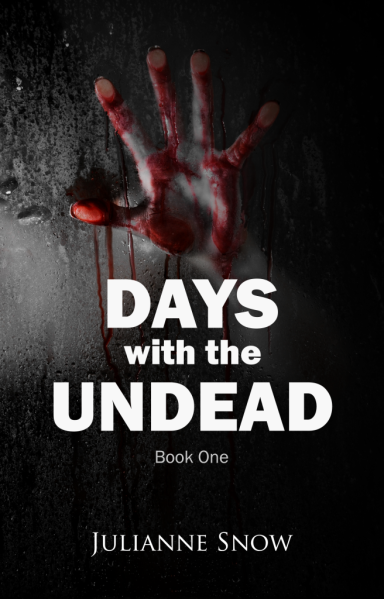 get the picture.
get the picture. north—like Black Christmas’ Roy Moore, Ginger Snaps’ John Fawcett, and horror twins Jen and Sylvia Soska—few of them are known for their literary contributions. Even David Cronenberg, praised internationally for his work (which includes The Fly, Dead Ringers, Scanners, and Shivers), is left out of the authorial conversation despite his reputation and having released his debut novel, Consumed, back in 2014.
north—like Black Christmas’ Roy Moore, Ginger Snaps’ John Fawcett, and horror twins Jen and Sylvia Soska—few of them are known for their literary contributions. Even David Cronenberg, praised internationally for his work (which includes The Fly, Dead Ringers, Scanners, and Shivers), is left out of the authorial conversation despite his reputation and having released his debut novel, Consumed, back in 2014. Although, if Canadian women in horror have anything to say about it, hopefully not for long.
Although, if Canadian women in horror have anything to say about it, hopefully not for long. made speculative fiction with erotic undertones mainstream long before Stephenie Meyer. Kelley Armstrong is a fan favourite and legendary horror author, with her thriteen-book Otherworld series inspiring the show Bitten (2014-2016). Armstrong not only caters to adult horror fans, but has written several young adult trilogies (like the Darkest Powers & Darkest Rising series) which appeal to young readers and older ones alike. Her work features a diverse range of women, and explores both the idea of what it means to be a woman and what really makes a monster. Julianne Snow’s Days with the Undead series takes a northern approach to zombies, and breathes new life into an otherwise lifeless monster.
made speculative fiction with erotic undertones mainstream long before Stephenie Meyer. Kelley Armstrong is a fan favourite and legendary horror author, with her thriteen-book Otherworld series inspiring the show Bitten (2014-2016). Armstrong not only caters to adult horror fans, but has written several young adult trilogies (like the Darkest Powers & Darkest Rising series) which appeal to young readers and older ones alike. Her work features a diverse range of women, and explores both the idea of what it means to be a woman and what really makes a monster. Julianne Snow’s Days with the Undead series takes a northern approach to zombies, and breathes new life into an otherwise lifeless monster. She’s been published for journalism, poetry, as well as creative non-fiction, and has spoken about horror literature at several Canadian conventions. Her workshop “Bikinis, Brains, and Boogeymen: How To Write Realistic Women in Horror,” was acclaimed by
She’s been published for journalism, poetry, as well as creative non-fiction, and has spoken about horror literature at several Canadian conventions. Her workshop “Bikinis, Brains, and Boogeymen: How To Write Realistic Women in Horror,” was acclaimed by 


 Sara C. Walker writes fiction, usually urban fantasy, from short stories to novels. “True Nature” can be found in Alice Unbound: Beyond Wonderland (Exile Editions, ed. Colleen Anderson) and “If Wishes Were Pennies” in Canadian Creatures (Schreyer Ink Publishing, ed. Casia Schreyer). Forthcoming stories include “Stag and Storm” in Canadian Dreadful (Dark Dragon Press, ed. David Tocher) and “Call of the Ash” in Not Just A Pretty Face (Dead Light Publishing). She’s edited two anthologies of stories set in the Kawartha Lakes. When not writing, she works at a library and is always ready to give reading suggestions. You can find out more at
Sara C. Walker writes fiction, usually urban fantasy, from short stories to novels. “True Nature” can be found in Alice Unbound: Beyond Wonderland (Exile Editions, ed. Colleen Anderson) and “If Wishes Were Pennies” in Canadian Creatures (Schreyer Ink Publishing, ed. Casia Schreyer). Forthcoming stories include “Stag and Storm” in Canadian Dreadful (Dark Dragon Press, ed. David Tocher) and “Call of the Ash” in Not Just A Pretty Face (Dead Light Publishing). She’s edited two anthologies of stories set in the Kawartha Lakes. When not writing, she works at a library and is always ready to give reading suggestions. You can find out more at 



 Colleen Anderson is a Canadian author with over two hundreds works published including fiction and poetry. She has two fiction collections, Embers Amongst the Fallen, and A Body of Work which was published by Black Shuck Books, UK in 2018. She has been longlisted for a Stoker Award and shortlisted for the Aurora and Gaylactic Spectrum Awards, as well as having placed in several poetry contests. A recipient of a Canada Council Grant, Colleen has served on Stoker and British Fantasy Award juries, copyedited for publishers, and edited three anthologies (
Colleen Anderson is a Canadian author with over two hundreds works published including fiction and poetry. She has two fiction collections, Embers Amongst the Fallen, and A Body of Work which was published by Black Shuck Books, UK in 2018. She has been longlisted for a Stoker Award and shortlisted for the Aurora and Gaylactic Spectrum Awards, as well as having placed in several poetry contests. A recipient of a Canada Council Grant, Colleen has served on Stoker and British Fantasy Award juries, copyedited for publishers, and edited three anthologies (
 Rogers), the girls’ mother. She has a calm, open and nice relationship with her children, but she doesn’t suppress or shame them. When she realises what’s happening after discovering a dead body, she tells Brigitte, “First thing tomorrow I’ll let the house fill up with gas and I’ll light a match.” The apple doesn’t fall far from the tree. A mother’s instinct to protect is as strong as a werewolf’s need to devour.
Rogers), the girls’ mother. She has a calm, open and nice relationship with her children, but she doesn’t suppress or shame them. When she realises what’s happening after discovering a dead body, she tells Brigitte, “First thing tomorrow I’ll let the house fill up with gas and I’ll light a match.” The apple doesn’t fall far from the tree. A mother’s instinct to protect is as strong as a werewolf’s need to devour. You can view a trailer to Ginger Snaps
You can view a trailer to Ginger Snaps 





